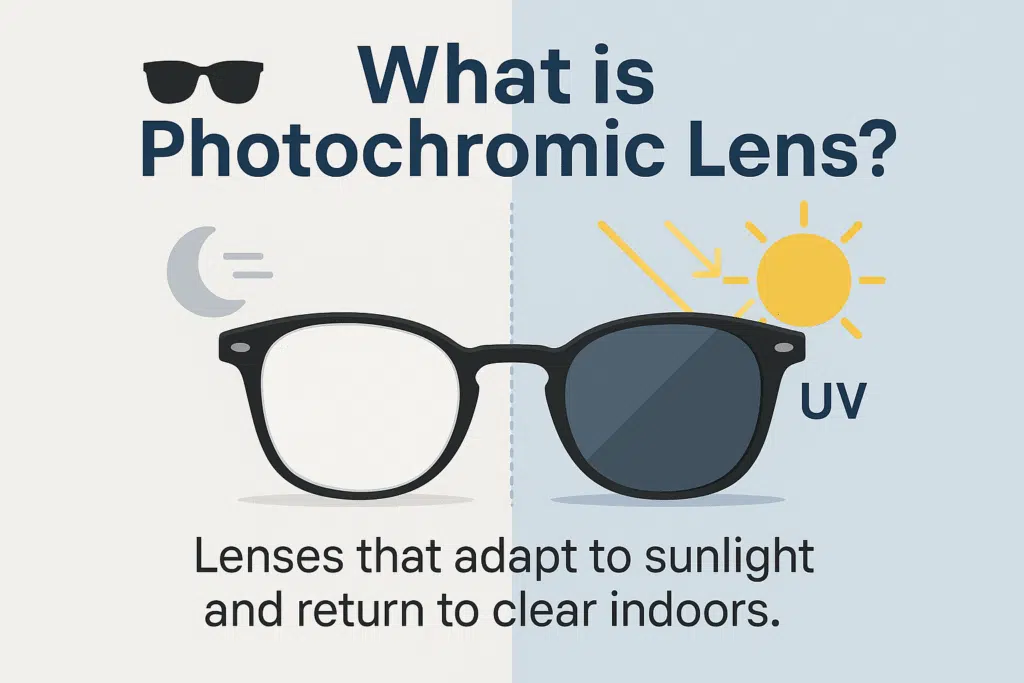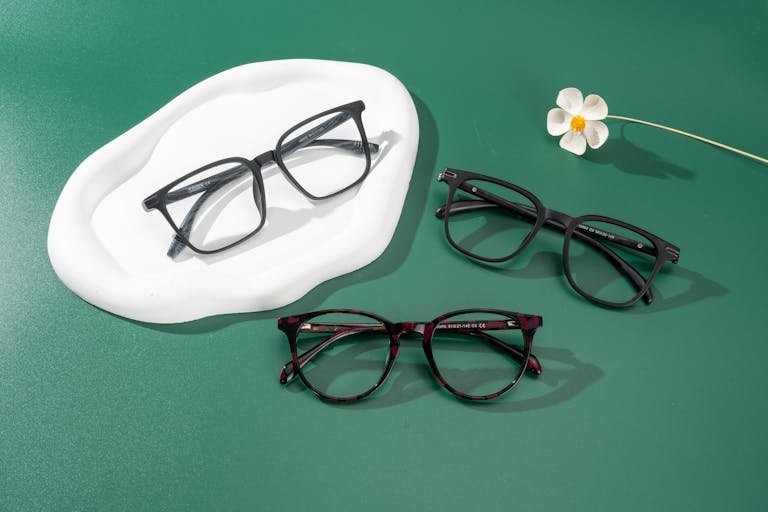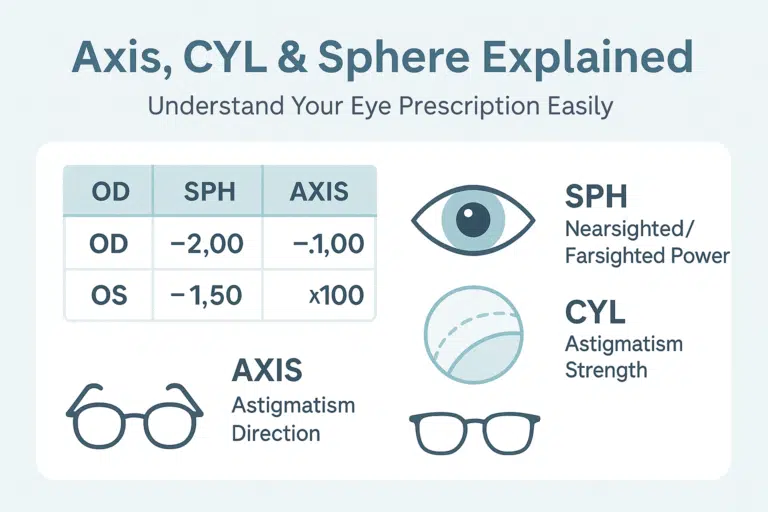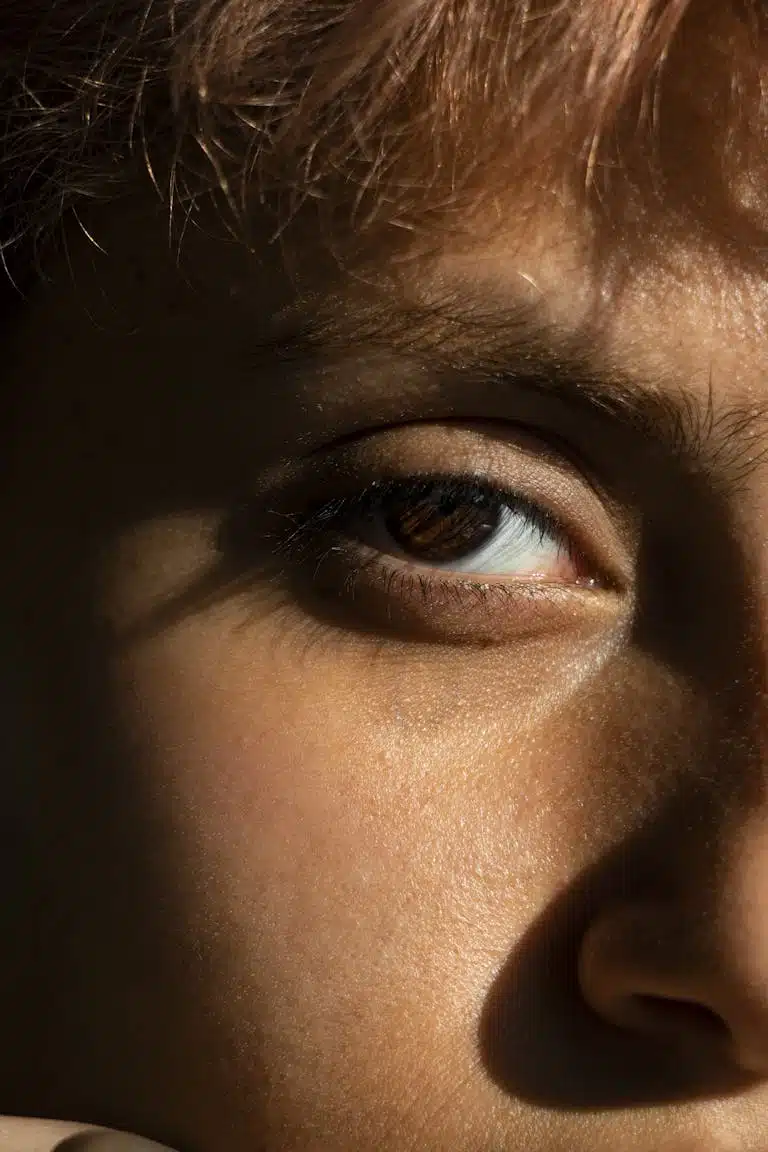What Is a Photochromic Lens? Benefits, Types & How It Works
Are you getting annoyed with the need to change glasses every time you have to change lights?
If yes, you are not alone, and you are about to find out a smarter way that will fit your lifestyle. Photochromic Lenses, you can get the healthy balance of comfort, convenience, and protection with automatically darkening photochromic lenses, which help to keep your eyes comfortable and cool outdoors, and clear indoors.
In this guide, I am going to take you through what photochromic lenses are, how they work, what the different varieties of them are, and even whether it is worth it in your lifestyle or not.
What is a Photochromic Lens?
A photochromic lens is a type of optical lens that darkens automatically in response to exposure to ultraviolet (UV) light, e.g., sunlight, and is again clear in a darkened environment, or inside a building.
Such lenses may be called light-adaptive or self-tinting ones. In other words, they are photosensitive lenses that behave like sunglasses when you are outdoors and turn into a regular pair of glasses when you are indoors.
Characteristics
- UV-activated tinting
- There is no need to change the pair of sunglasses
- Available in prescription and non-prescription formats
- It can be applied to different lens materials (glass, polycarbonate, plastic)

Types of Photochromic Lenses
As far as photochromic lenses go, you cannot be left at the mercy of a solution that fits all. These glasses have evolved a long way from when they used to be not only clunky but also slow-changing glasses.

1. Glass-Based Photochromic Lenses
Photochromic glasses were the first to be photochromic. The lenses are usually silver halide crystals that respond to UV light. Nevertheless, they are:
- Plastic lenses are heavier than plastic lenses
- Takes longer to get back to the clear inside
- Not as commonly used today due to modern alternatives
2. Plastic-Based Photochromic Lenses
Most of the photochromic lenses are produced from materials polycarbonate or plastics that are lighter in nature and more diverse. This kind of lens is dependent on photochromic organic molecules that are stimulated to change their shapes with respect to UV light.
- Fast transitions
- Lightweight and impact-resistant
- Better suited for everyday use
3. Polycarbonate Photochromic Lenses
These prove to be of great benefit to children or athletes, as well as other individuals with a very active lifestyle. Polycarbonate is:
- Extremely durable
- Shatter-resistant
- It has a UV protective effect without a photochromic layer
4. High-Index Photochromic Lenses
You may have such a strong prescription that you are well advised to use high-index lenses so as to cut down the thickness and still enjoy the features of photochromic lenses.
5. Blue-Light Blocking Photochromic Lenses
Blue light filtering is currently a possibility and makes the modern one a good choice amongst users of the digital world. The lenses are adaptive, both out of doors and filter out high-energy visible (HEV) light indoors.
How Do Photochromic Lenses Work?
Photochromic lenses have molecules that have their structures are altered by UV rays. These molecules change their shape and take in more light, and the lens in this case turns dark.
By going inside or away from where the UV does not reach the product, the molecules go back to their original shape, and the lens becomes clear again.
Transition Time
- The average time it takes to darken most lenses is 30 to 60 seconds
- The time required to clear is 2-5 minutes
- Speed is a matter of brand, material, temperature, and age of the lens
Factors
- Temperature: Lenses may darken more slowly in hot weather
- UV Intensity: The Darker the UV rays, the stronger they are
Read Also: Canthal Tilt Explained: Boost Your Youthful Appearance
Users of Photochromic Lenses
1. Office Workers and Digital Users
Sensitized lenses (with blue-light filters) are ideal for the wearer who:
- Spend long hours on screens
- Transfer between the interior and exterior often takes place.
- Need to decrease the fatigue in the eyes
2. Outdoor Enthusiasts
If you love:
- Hiking
- Running
- Cycling
- Driving
These are the lenses that provide glare and UV protection, and these are ideal for outdoor activities.
3. Drivers
Photochromic lenses do not respond well when in cars because they are blocked by the UV-blocking windshields. However, there are types of lenses that are specifically designed to be used in automobiles, such as XTRActive or Drivewear.
4. Children
Photochromic lenses have the following advantages for kids wearing prescription glasses:
- Constant UV protection
- There is no need to carry separate sunglasses
- Safety based on shatter-resistant material (polycarbonate)
5. Seniors
Blurred vision is greater in older eyes. Photochromic lenses are useful in that they
- Reducing glare
- Enhancing contrast
- Can provide smooth transitions outside and inside houses
Photochromic Lenses vs Transition Lenses
People often confuse the two terms. Let’s clarify:
| Feature | A branded type of photochromic lens | Transition Lenses |
|---|---|---|
| Definition | Generic term for self-tinting lenses | Branded type of photochromic lens |
| Technology | Varies across brands | Uses patented Transitions® technology |
| Availability | Many brands offer it | Only from Transitions Optical |
| Tint Speed | Varies | Typically faster and more responsive |
| Durability | Brand-dependent | Generally high with long-lasting effects |
FAQs About Photochromic Lenses
Does a photochromic lens function at night?
No. They do not replace night-driving glasses, and they are visible even at night.
Can I wear photochromic lenses while driving?
Yes, but select lenses that are optimized to be used when driving, such as Transitions XTRActive or Drivewear.
Do they meet the requirements of children?
Absolutely. Children and UV protection help with hassle-free light adaptation.
What is the life of a photochromic lens?
Most of them last between 2 and 3 years before the tinting molecules break down.
Read Also: Get Hunter Eyes: 4 Proven Ways That Work
Final Thoughts
With complete honesty, I say yes, they are worth it, but only as long as your lifestyle is one that requires you to go back and forth between an indoor and outdoor environment. They are practical, secure, and fashionable.
You, as a reader, should consider:
- How much time do you spend outdoors
- Whether you wear prescription lenses
- Your budget and personal comfort
The photochromic lenses may turn out to be a new best friend to your eyes, in case you want to prioritize ease of use, eye protection due to UV protection, and healthy eyes.







